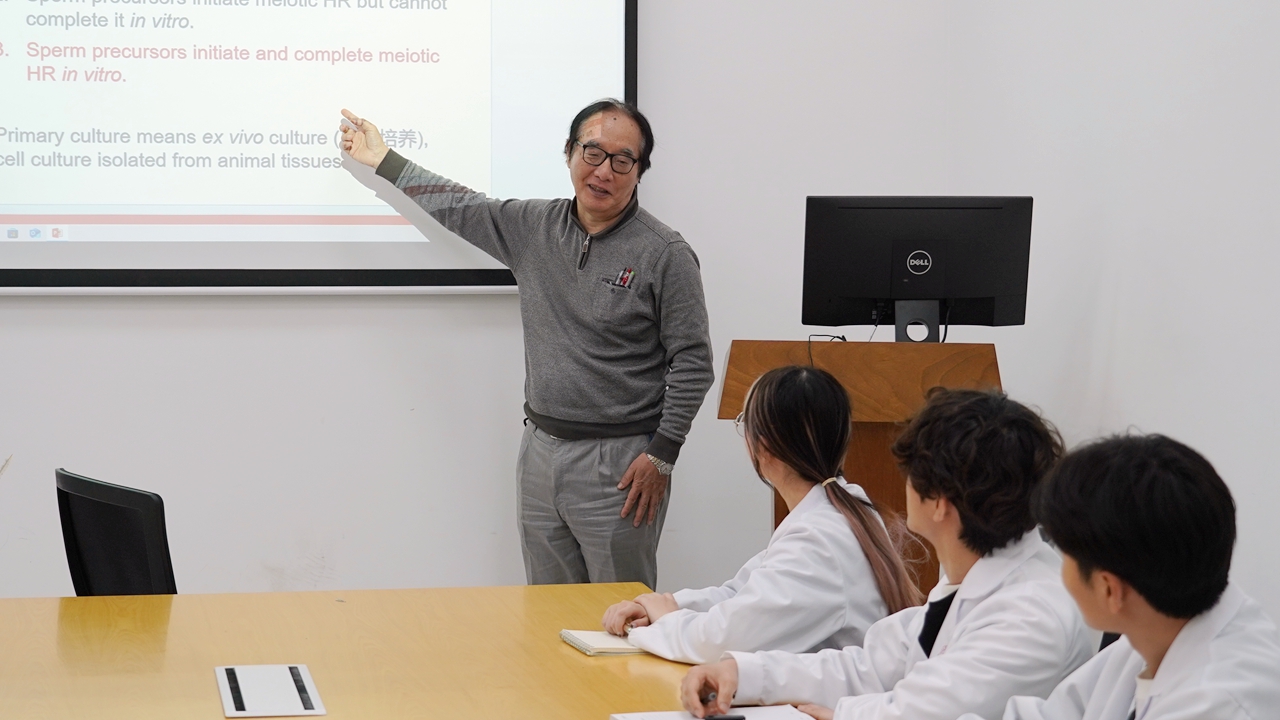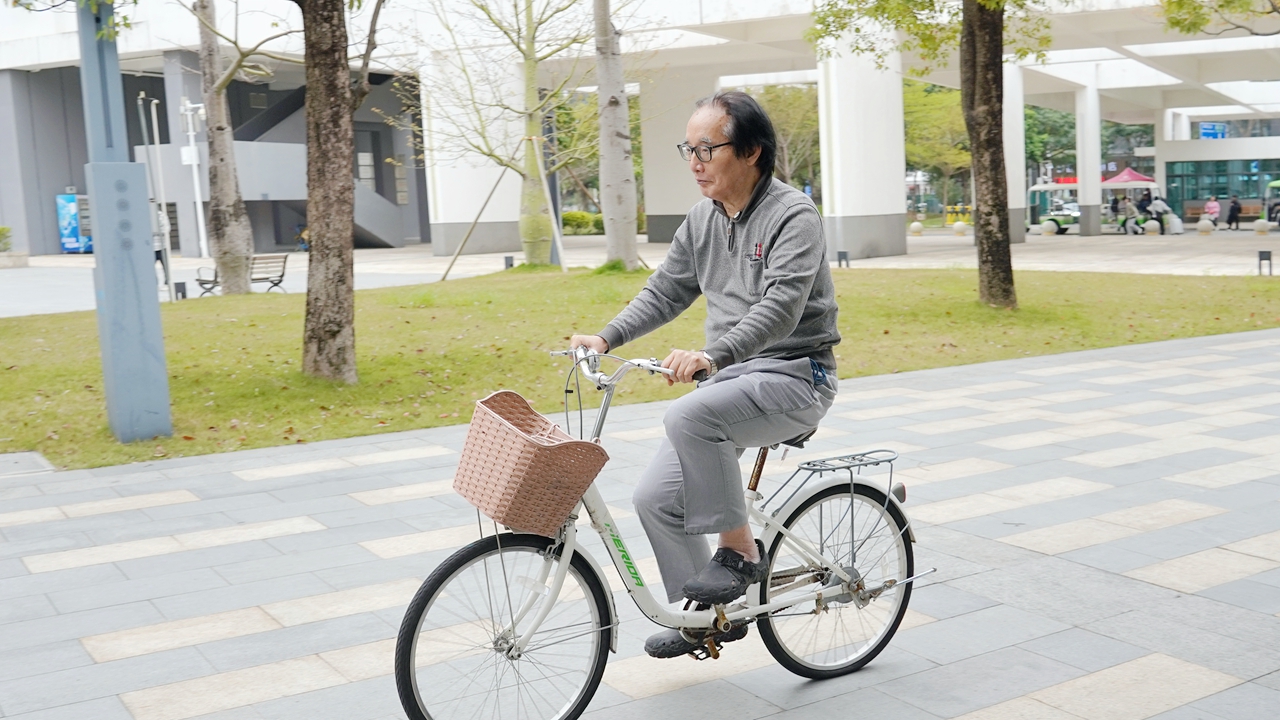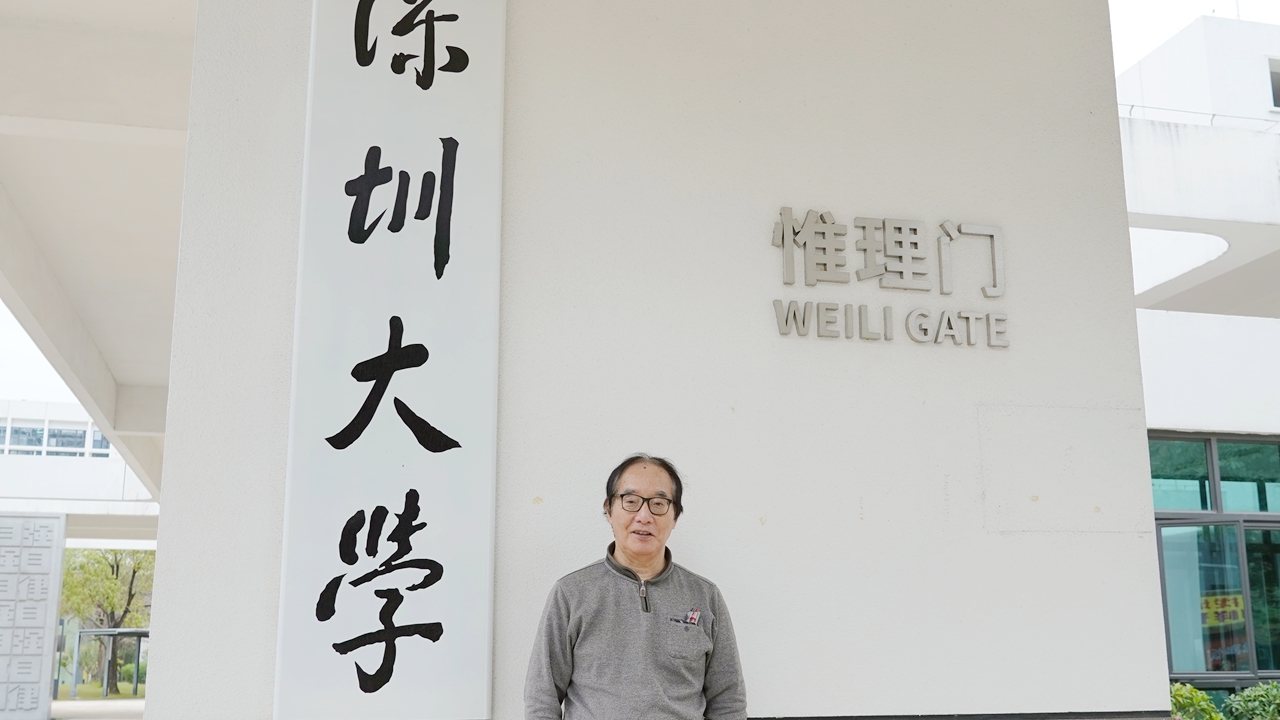Prof. aims to get cancer treatment advances
Writer: Chen Siqi | Editor: Lin Qiuying | From: Original | Updated: 2025-05-10
Editor’s note:
From May 12-14, 2025, the China Pavilion at Expo 2025 Osaka will host "Shenzhen Week."
To mark this occasion, Shenzhen Daily and EyeShenzhen, a multilingual international portal, have produced a special video and report series about Japanese in Shenzhen. The collection features diverse perspectives from Japanese corporate executives, chamber of commerce leaders, entrepreneurs, educators, and community volunteers, all sharing their unique "Shenzhen Stories."
Video and photos by Lin Songtao
Having dedicated himself to DNA damage repair for nearly 40 years, Shunichi Takeda, a distinguished professor at Shenzhen University’s Medical School, has long been passionate about the research. His groundbreaking work has laid crucial scientific foundations for breakthroughs in cancer treatment. Since moving to Shenzhen, he has been deeply impressed by the city’s — and the nation’s — rapid progress in medical research. Now, he hopes to serve as a bridge, encouraging more Japanese researchers to collaborate in Shenzhen.
Pure research environment
For Prof. Takeda, immersing himself in research he is passionate about brings immense fulfillment. And Shenzhen provides the perfect environment to extend that passion.

Professor Takeda communicates with his students.
Before joining Shenzhen University in 2021, he was a professor at Kyoto University’s Faculty of Medicine, a leading institution in medical research. What drew him to Shenzhen was the city’s vibrant, innovative energy, reflected in its students and campus development.
“After visiting many universities in China, I was sure that Shenzhen University was the best choice,” he said. “The reason is simple: it gathers a large number of researchers in my field—we all focus on studying the molecular mechanisms of cancer treatment.”

Professor Takeda rides a bike for daily commute at Shenzhen University.
Theprimary research focus for Prof. Takeda is on the mechanisms of DNA recombination and repair. The professor explained his research field patiently and emphasized on its importance, “understanding the molecular mechanisms of DNA damage repair can help identify effective measures to reduce the risk of related diseases and contribute to cancer prevention and treatment.”
With pride, he said that he entered this field at 30, when it was at the forefront of science. “I chose it because I wanted to do cutting-edge research,” he said.
Supportive research ecosystem
“With very little administrative stuff to deal with, I can spend almost all my time on research,” said the professor. He spends roughly 80 hours a week on research and feels a strong sense of fulfilment.
Prof. Takeda has set three main goals for the next five years, with the main tasks to uncover why over half of anti-cancer drugs damage patients’ ears and kidneys and publish a paper in a top-tier journal like Nature or Science.
He is confident in achieving these targets, thanks to strong government support, talented students, and access to advanced lab equipment that ensures precise, efficient results.

Professor Takeda poses for a photo at Shenzhen University.
The professor showed us a shared lab — a Platform for Research and Innovation — in the university where students and researchers in his team could use the various equipment. The platform, covering 1,100 square meters, not only provides technical service to researchers from Shenzhen University but also for the public where researchers can conduct molecular imaging analysis, case studies, and small animal imaging analysis.
“We canuse the advanced machines to achieve more accurate results with less error,” said the professor.
Fostering intl. collaboration
Since arriving in Shenzhen, Prof. Takeda has been struck by China’s rapid progress in scientific research—particularly in tech fields like computer science, robotics, and new energy vehicles. Yet, he notes, “Many Japanese remain unaware of China’s strengths in science and technology.”
To bridge this gap, he has invited Japanese professors to visit Shenzhen, believing firsthand exposure is essential for fostering mutual understanding. He also highlights the Osaka 2025 Expo as a key opportunity for Japanese audiences to learn about China’s innovations through its pavilion.
“China drives innovation in next-gen tech,” he said. “I want more international researchers to see its potential.”